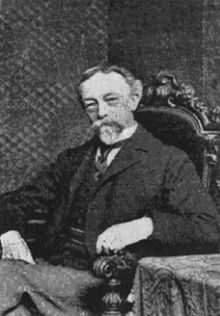
Maurits Frederik Hendrik de Haas

Hudson River Under The Moonlight

Hudson River Under The Moonlight
Maurits Frederik Hendrik de Haas (12 diciembre 1832 hasta 23 noviembre 1895) fue un holandés - Americana pintor de marinas . Su nombre ha sido escrito como Mauritz Frederik de Haas, Maurice FH de Haas, Maurice Frederic Henri de Haas, Mauritz Frederick Hendrick De Haas, "Maurice Frederick Hendrick de Haas", así como varias otras variaciones. [2]
De Haas nació en Rotterdam , Países Bajos . Estudió arte en la Academia de Rotterdam y en La Haya , bajo Johannes Bosboom y Louis Meyer , y en 1851-1852 en Londres , siguiendo los acuarelistas ingleses del día.En 1857 recibió una comisión de artistas en la marina holandesa , pero en 1859, bajo el patrocinio de August Belmont , que había sido recientemente el ministro de los Estados Unidos en La Haya, renunció y se trasladó a la ciudad de Nueva York .
Se convirtió en un asociado de la Academia Nacional en 1863 y un académico en 1867, y expone cada año en la academia, y en 1866 fue uno de los fundadores de la Sociedad Americana de Pintores de Acuarelas .Murió en la ciudad de Nueva York .
Su Farragut Pasando los Fuertes en la batalla de Nueva Orleans y los rápidos arriba Niágara, que se exhibió en la exposición de París de 1878 , fueron su más conocido, pero no sus obras más típicas, por sus temas favoritos eran tormenta y naufragio, el viento y pesada resaca, y menos a menudo luz de la luna en las costas de Holanda, de Jersey, de Nueva Inglaterra, Long Island , el Canal Inglés y de Grand Manan isla en la Bahía de Fundy .
Su hermano Willem Frederik de Haas (1830-1880) fue también un pintor de marinas.
Maurits Frederik Hendrik de Haas (December 12, 1832 – November 23, 1895) was a Dutch-American marine painter. His name has been written as Mauritz Frederik de Haas, Maurice F. H. de Haas, Maurice Frederic Henri de Haas, Mauritz Frederick Hendrick De Haas, "Maurice Frederick Hendrick de Haas", as well as various other variations.[2]
De Haas was born in Rotterdam, Netherlands. He studied art in the Rotterdam Academy and at The Hague, under Johannes Bosboom and Louis Meyer, and in 1851-1852 in London, following the English watercolourists of the day. In 1857 he received an artists commission in the Dutch Navy, but in 1859, under the patronage of August Belmont, who had recently been minister of the United States at The Hague, he resigned and moved toNew York City.
He became an associate of the National Academy in 1863 and an academician in 1867, and exhibited annually in the academy, and in 1866 he was one of the founders of the American Society of Painters in Water Colors. He died in New York City.
His Farragut Passing the Forts at the Battle of New Orleans and The Rapids above Niagara, which were exhibited at the Paris Exposition of 1878, were his best known but not his most typical works, for his favorite subjects were storm and wreck, wind and heavy surf, and less often moonlight on the coasts of Holland, of Jersey, of New England, Long Island, the English Channel and of Grand Manan island in the Bay of Fundy.
His brother Willem Frederik de Haas (1830–1880) was also a marine painter.







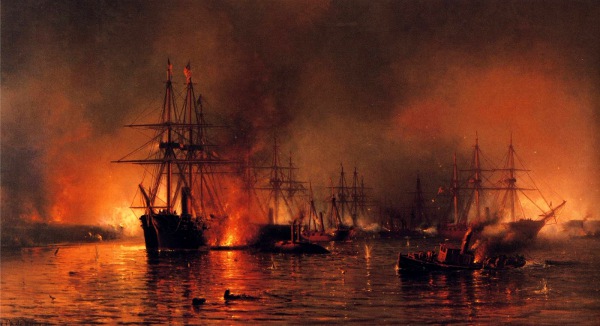
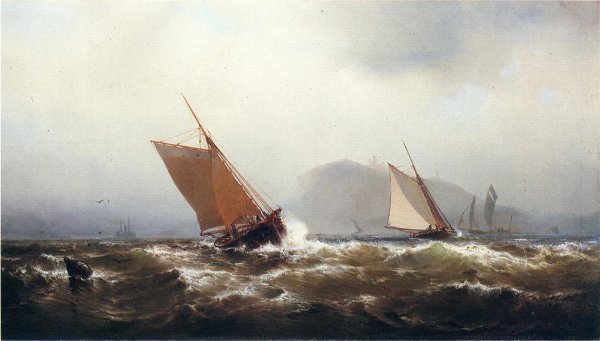


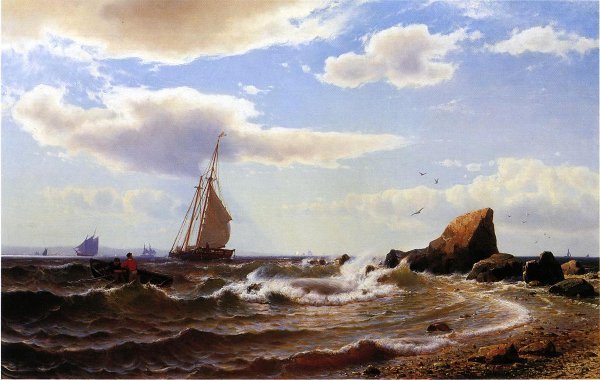



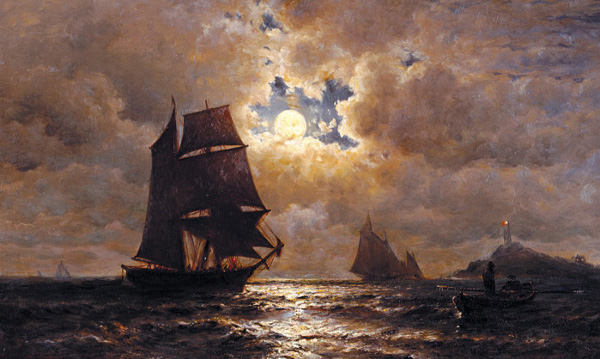
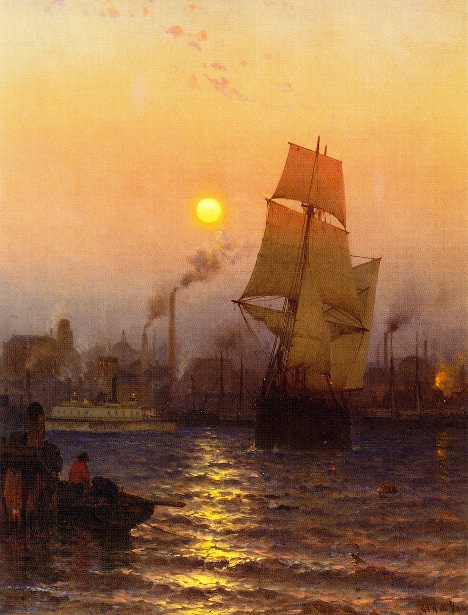



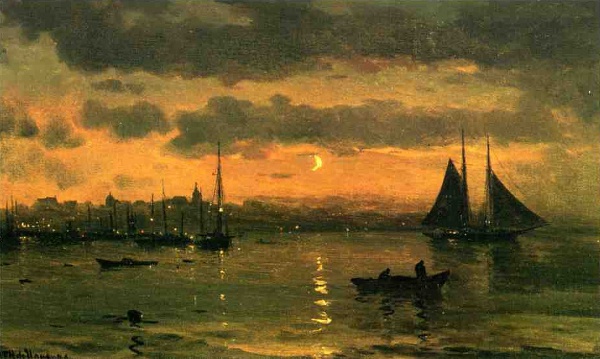

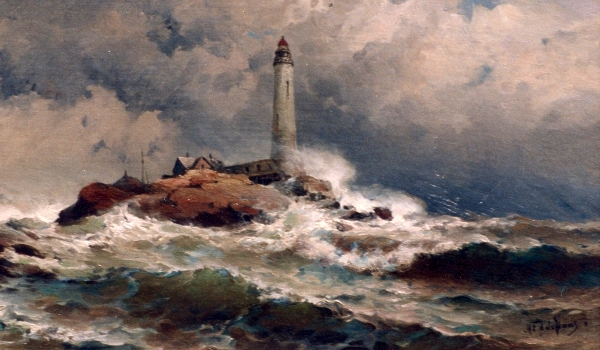



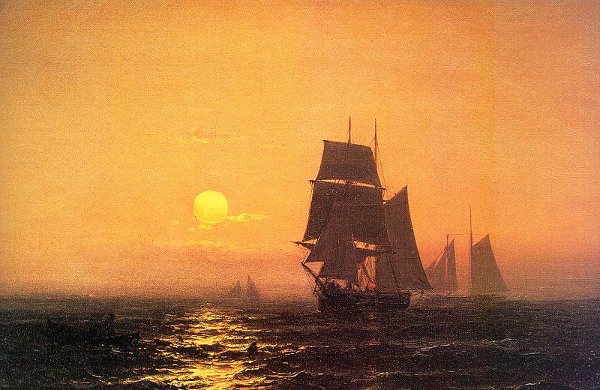
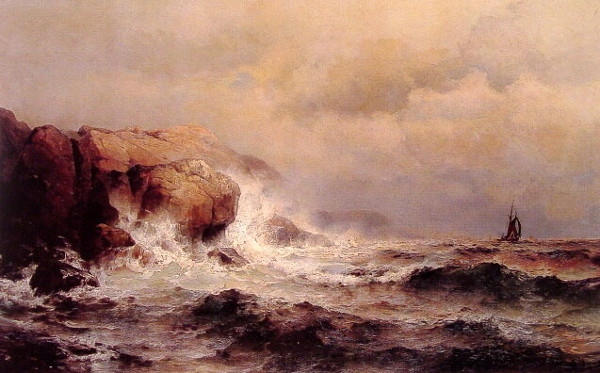



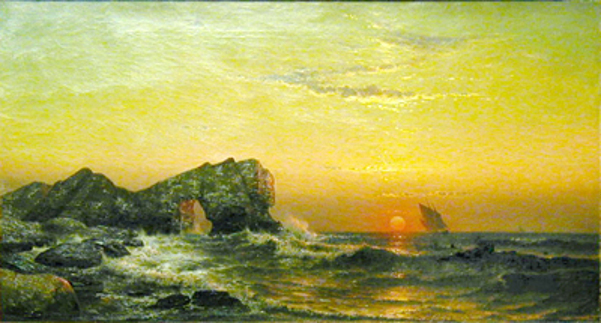



No hay comentarios:
Publicar un comentario